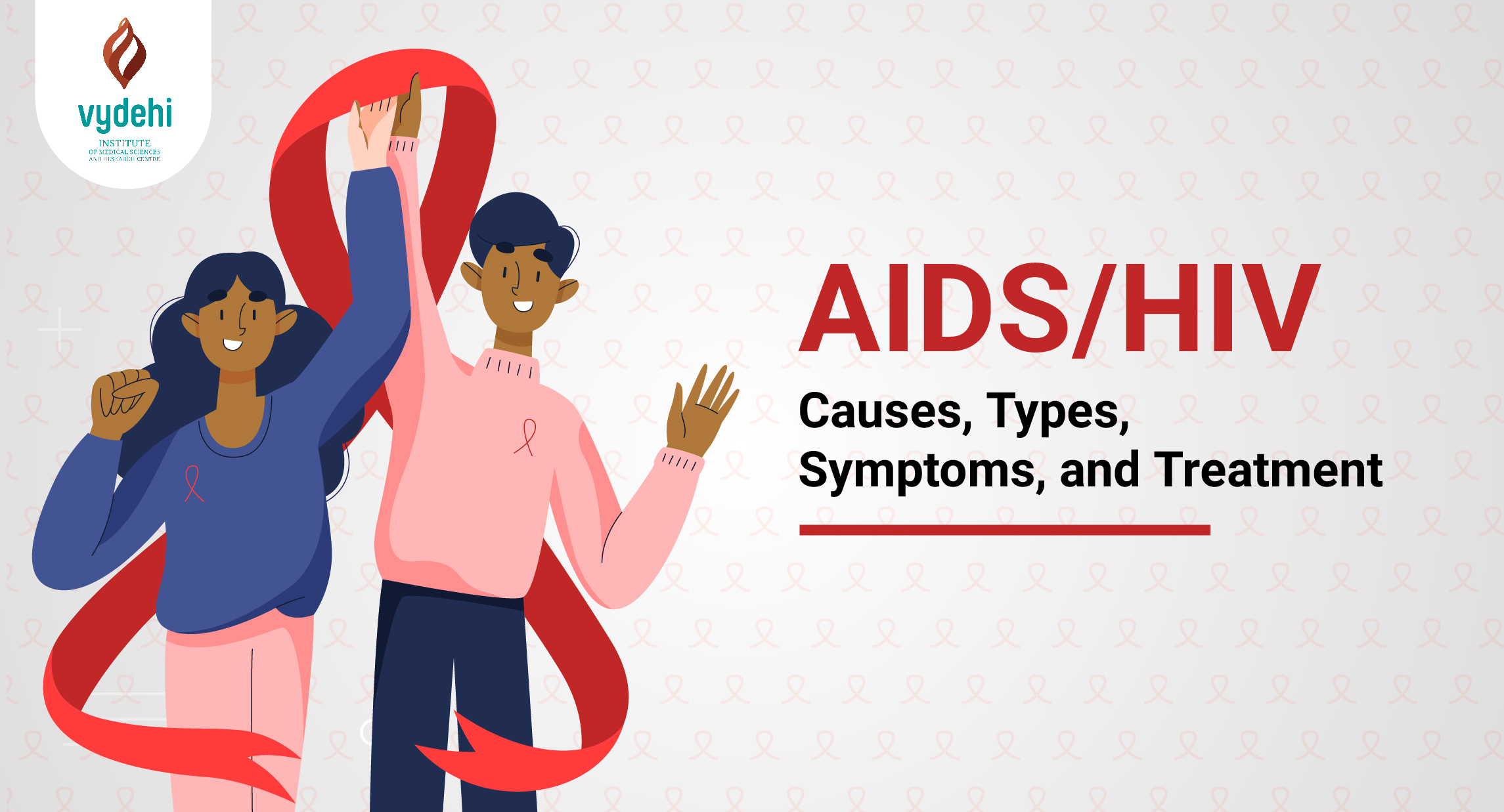HIV, short for “human immunodeficiency virus,” is a sexually transmitted virus. Sharing intravenous needles, receiving infected blood donations, and mother-to-child transmission of HIV during childbirth and nursing are also risk factors for HIV transmission. When HIV is contracted, symptoms often appear between two and four weeks later. Sometimes the onset of symptoms is delayed by as much as a year.
AIDS’s full form is Acquired immune deficiency syndrome (AIDS). It is a disease caused by HIV that might create further complications. HIV/AIDS is treated with antiretroviral medication and lifestyle adjustments. Unexpected infections, which are often fatal, could strike the person. Therefore, preventing an HIV-positive individual from becoming ill is crucial.
HIV disease, commonly known as acquired immunodeficiency syndrome, has progressed to its last stages. Opportunistic infections, such as tuberculosis or yeast infections, are possible during this stage.
Symptoms:
After recovering from an illness, you might not initially feel anything. The first two to three weeks after getting sick are the worst. Sometimes, symptoms don’t appear for up to a year. There may not be obvious symptoms during the Acute Retroviral phase of HIV. The following are some things that individuals might observe at this time:
- Headache
- Diarrhea
- Lumpy lymph nodes
- Fatigue
- Itchy bug bites Perspiring during the night
- Sore Throat
- Hurting joints
- Sore muscles
Long-term HIV infection might cause the following symptoms to manifest:
- A strain of HIV that does not cause AIDS
- Candida infection of the vaginal tract
- Zovirax (herpes) Disease of the cervical spine, often known as dysplasia, Bacillary angiomatosis, or thrush,
- Preexisting cervical cancer
- Recurrent Pneumonia Caused by Candidiasis
- Ulcerative colitis
Warn Signals
The transmission of HIV/AIDS occurs through the following routes:
- Sexual activity is the primary transmission route for HIV.
- Transfusions of diseased patients’ blood
- Needless sharing among the sick.
- From an infected mother to her child.
5 Ways Of Preventing Hiv Aids
The following actions will help halt the spread of HIV:
- Needles are not to be shared. After one use, it should be thrown away.
- A pregnant woman who has HIV should start therapy as soon as possible.
- One must inform their sexual partner of their HIV status.
- Proper use of condoms
- Practicing safe sex
Diagnosis
CD4 cell counts and viral loads are further indicators of HIV infection. Differential diagnosis is also crucial while looking for HIV infection. For instance, if you’re concerned about heart disease, you might request cardiac biomarkers.
Infiltrates in the lungs can be detected with careful planning of a chest X-ray. Arterial blood gases reveal crucial details about an HIV patient. Tuberculosis testing needs to be implemented. Sputum cultures are a diagnostic tool for identifying bacterial infections.
Treatment of AIDS
Those with AIDS may benefit greatly from additional diagnostic procedures, such as a CT scan if a diagnosis of systemic tuberculosis is being considered. Medical tests such as bilirubin, transaminase, and light base have practical industrial applications.
People with dysphagia, or difficulty swallowing, should have an esophagogastroduodenoscopy immediately. Having diarrhea is a typical symptom of having AIDS. Germs, parasites, and parasite eggs should be tested for in these individuals. A colonoscopy is required when other treatments have failed, and the condition is severe. Neurological issues in people with HIV or
Treatment with antiretroviral medications is the cornerstone of HIV care. Reverse transcriptase inhibitors can be found in various nucleoside and nucleoid combinations. CCR5 inhibitors and protease inhibitors are used in addition to this for HIV treatment.
Diarrhea, nausea, headaches, elevated levels of creatinine kinase, and a darkening of the skin are all possible side effects of AIDS.
Prognosis
When comparing people with HIV, those with a CD4 level of 500 or higher lead relatively typical lifestyles to those with a low CD4 count. People with AIDS have a low life expectancy when opportunistic illnesses are not treated.
Disclaimer:
The information included here is only for knowledge-sharing purposes, and the blog is not intended to be a substitute for diagnosis, medical advice, or treatment by a healthcare professional. Every individual needs advice based on diagnosis and evidence, hence the reader should consult their doctor to determine the disease and any treatment must be taken under appropriate medical guidance.

 Emergency Number
Emergency Number

What are the causes of hiv/aids?